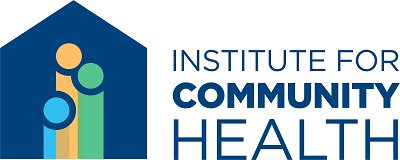 by Carolyn F Fisher, PhD, Research and Evaluation Project Manager
by Carolyn F Fisher, PhD, Research and Evaluation Project ManagerThis week is the Bay State Bike Week, and ICH is participating in the MassCommute Bicycle Challenge on a team together with Cambridge Health Alliance.
 |
| Martina Todaro, ICH RA |
Martina Todaro says she arrives at work in a better mood when she bikes
We’re lucky to be located in the Greater Boston area, where
there is a significant amount of bicycle infrastructure, including dedicated
bike lanes, and some off-road bike trails. Perhaps most importantly, too, there
are lots of other bicyclists on the roads. There is safety in numbers – drivers,
seeing one bicyclist, will be more attuned to looking for others, and in
general, drivers are not surprised to see bikes on the road.
Exercise and
individual health
Cycling to work has the major advantage of building
exercise into the start and end of our days. This way, even when our schedules
are packed, we are guaranteed to fit in some exercise. And exercise is
extremely important to health, as ICH RA Abby
Tapper writes. Some even argue that biking, specifically, is good for
mental health and for promoting
happiness.
Jeff Desmarais says "Even if biking to work didn't make me healthier and shave 15 minutes off my commute, I would still do it. In the morning it helps me get ready for my day and in the evening it helps me unwind."
Jeff Desmarais says "Even if biking to work didn't make me healthier and shave 15 minutes off my commute, I would still do it. In the morning it helps me get ready for my day and in the evening it helps me unwind."
 |
|
Jeff Desmarais, ICH PM |
Environmental Health
and Social Justice
Further, the environmental benefits of biking are important
to the communities in which we live. When we bike, we both avoid putting
greenhouse gases into the atmosphere, with broad implications for climate
change, and also avoid putting ingredients
of smog into the air in our local communities. While climate change affects
all of us, smog and its negative health impacts such as asthma particularly and
disproportionately
affect our urban communities which tend to be poorer and lived in by more
people of color.
The Pedestrian and Bicycle Information Center points out
that prioritizing bike-ability and walk-ability in planning has important social justice
implications. They write:
“If automobile travel is the only
feasible mode of transportation in a community, low-income families are placed
at a large disadvantage with very limited mobility. By providing safe and
convenient pedestrian and bicycle facilities, the community can ensure that all
citizens have access to a viable mode of transportation.”
Community benefits: Bicycling
is good for the economic
health of our communities: building
bike infrastructure promotes job creation, and bicycle-related businesses such
as bike stores and repair shops are a source of revenue for our communities.
There is also evidence that people who bike are more
likely to patronize local businesses they pass than people in cars.
In addition to the economic, health and environmental benefits for our communities, there are less tangible benefits for our communities. Noise will decrease, because bikes are quieter than cars, and the “livability” of the communities will increase. Biking also promotes social interaction more than traveling in cars does.
 |
|
Carrie Fisher, ICH PM, drops the kids at school before
heading to work
|
In addition to the economic, health and environmental benefits for our communities, there are less tangible benefits for our communities. Noise will decrease, because bikes are quieter than cars, and the “livability” of the communities will increase. Biking also promotes social interaction more than traveling in cars does.
 |
|
Abby Tapper, ICH RA, bikes with her dad
|
Links to biking
resources
Boston Bikes is a
City of Boston initiative that promotes cycling in the city, and has links to
numerous programs including (among many other things) How-Tos for beginning
bicyclists, special programs for women bicyclists, and information about
Hubway, the Greater Boston bike sharing program (which has $5 annual membership
available for low-income residents).
Bike lane and trail
maps Google Maps isn’t always the best source for biking map information.
Try this map instead!
Hubway is a bike
share system in Boston, Cambridge, Somerville and Brookline. You can bike
without having to own a bike!





